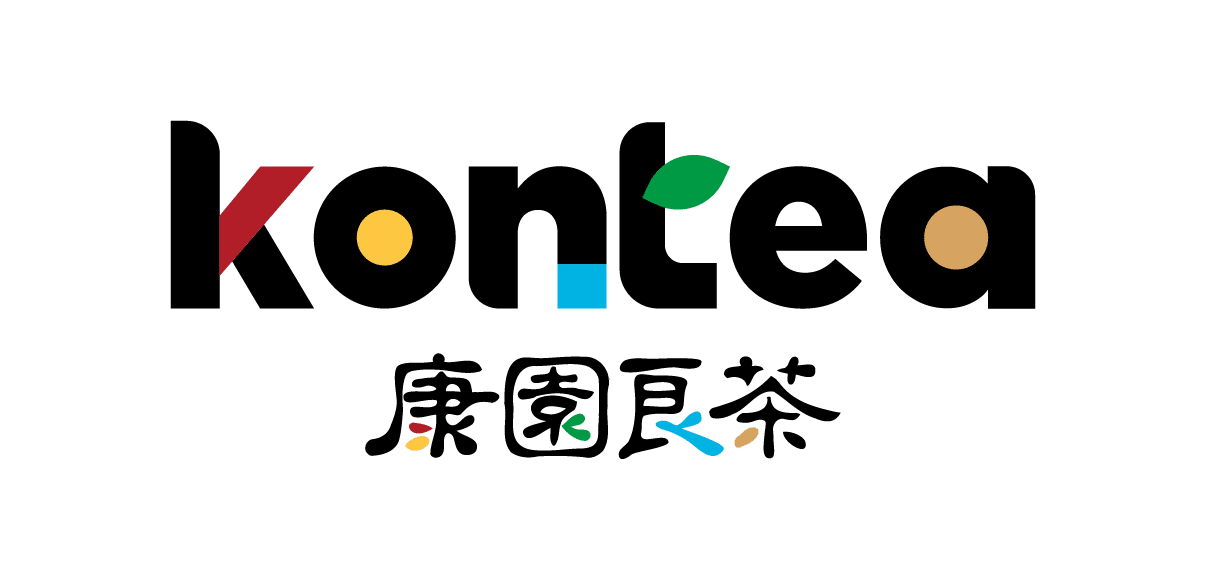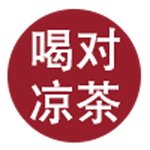Beat the Heat: Know Heatstroke Symptoms & TCM Treatment
Recently, Malaysia has starting to experience heatwave hitting, and the hot weather has arrived earlier this year (comparing to the past two years) due to the El Niño phenomenon. Meteorological departments in various states have issued heatwave warnings, urging people to be cautious against heat stroke and take precautions if any symptoms are to appeared.
In traditional Chinese medicine classics, it is mentioned that "heat stroke" is a seasonal ailment that is common in summer. The hot and humid weather in summer easily consumes one's vitality. However, although both are influenced by heat or humidity, "heatstroke" consists of two types with markedly different symptoms, which imply different treatment plans.
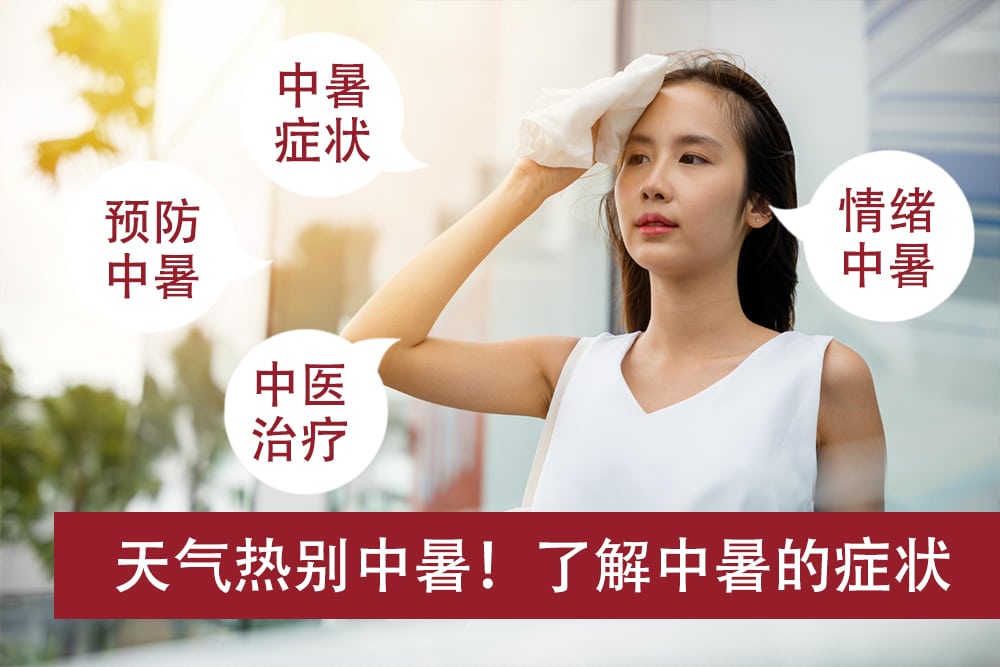
Beat the Heat: Know Heatstroke Symptoms & TCM Treatment

Type of Heat Stroke
From the perspective of traditional Chinese medicine, heatstroke is divided into two categories: "yang" heatstroke and "yin" heatstroke. "Yang" heat stroke is common among outdoor workers in summer, while "Yin" heatstroke can occur in any season, mostly among individuals who engage in little physical activity and spend long hours sitting in air-conditioned rooms.
The following are the types of heat stroke:
1. "Yang" Heat Stroke
Mostly refers to people who work or move around in environments with high temperatures, poor ventilation, and high humidity for extended periods. It may also occur due to dysregulation of the sweating control center.2. "Yin" Heat Stroke
Typically caused by sudden temperature differences (such as spending a long time outdoors in high temperatures then entering a cold air-conditioned room abruptly, or immediately consuming icy cold drinks or taking a cold shower after vigorous exercise), which leads to rapid contraction of the pores and microvessels on the skin surface.Apart from the physiological heatstroke mentioned above, there is also a condition known as "Emotional Heatstroke," which often refers to a set of mental and psychological symptoms caused by prolonged exposure to high temperatures, humidity, or hot environments during mental or physical activities, resulting in disruption of the body's temperature regulation function. In clinical practice, doctors characterize it by symptoms such as cognitive decline, emotional instability, and abnormal behaviour, also known as summer emotional disorder syndrome.
Symptoms of Heat Stroke
So how can one determine if they are experiencing symptoms of heat stroke? What are the common signs and symptoms of heat stroke? The following are the symptoms and signs of heat stroke:
1. Common Sign of Heat Stroke
- Body temperature of 40°C or higher
- Confusion, slurred speech, altered mental status
- Hot and dry skin, skin redness
- Profuse sweating
- Nausea and vomiting
- Rapid breathing
- Headache
2. Symptoms of "Yin" Heat Stroke
The whole body is slightly feverish but without sweating, feeling extremely tired, dizzy and heavy-headed, experiencing nausea, and loss of appetite.
3. Symptoms of "Yang" Heat Stroke
Mild - Symptoms include mild fever, dizziness, headache, excessive sweating, thirst, etc. Severe - Symptoms such as rapid breathing, and loss of consciousness, indicating a condition of "heat exhaustion".
4. Symptoms of Emotional Heat Stroke
- Restlessness, irritability, dizziness, lethargy, decreased work efficiency, a tendency to get angry easily, and even rage.
- Mental confusion, inability to concentrate, and frequently forgetting things.
- Depression, lack of interest in anything, lack of enthusiasm for colleagues and family, feeling life is dull and prone to anxiety and depressive emotions.
- Disordered thinking, abnormal behaviour, often persistently repeating behaviours such as repeatedly taking baths, washing face, or washing hands.
People at High Risk of Heat Stroke
After understanding the various symptoms of heatstroke, we strongly believe that you will be better able to distinguish whether you or someone around you is suffering from heatstroke when encountering these symptoms. It is essential to pay extra attention to people at high risk of heatstroke, especially during hot weather. The people at high risk include:
- Adults, especially those aged 40 and above
- Children aged 5 and above
- Individuals engaged in heavy physical labour (such as labourers, agricultural workers, athletes, police, etc.)
- Patients with respiratory system diseases
- Individuals with conditions such as hypertension, heart disease, diabetes, and thyroid disorders
How to Prevent Heatstroke
Heat stroke is predictable and preventable. Taking these measures can help reduce the chances of heat stroke during hot weather:
- Stay hydrated: Drink plenty of water so that your body is able to maintain normal body temperature through sweating on hot days.
- Wear light-coloured, loose-fitting, breathable clothing: This helps your body regulate temperature in hot weather.
- Avoid strenuous activities during the hottest times of the day: Schedule physical activities during cooler times, such as early morning or evening. If you must be active in hot weather, drink plenty of water (avoiding ice-cold water) and take breaks in cooler areas.
- High-risk individuals should be extra cautious: Especially children and the elderly should stay away from hot environments as much as possible. If symptoms of overheating are noticed, immediate action should be taken.
- Use sunscreen: Use SPF 15 or higher broad-spectrum sunscreen when going out. Reapply every two hours if you’re swimming or sweating to prevent sunburn, which impairs the body's ability to cool itself.
- Never leave anyone in parked vehicles: It's unsafe to stay in a car parked in the sun on hot days.
- Consider scraping therapy: For mild heatstroke symptoms, scraping therapy using specialized tools like scraping boards or blunt-edged coins on specific body areas can help reduce heat and clear heatstroke symptoms.
When dealing with "Emotional Heatstroke," individuals should constantly monitor their condition and take preventive measures when symptoms begin to appear. Here are some self-regulation methods suggested:
- Learn to express and vent emotions: Talk to friends and family when you’re feeling upset. Engage in hobbies or activities that you enjoy to release negative emotions and energy.
- Physically cool down: Minimize outdoor activities during the day, keep indoor spaces ventilated, drink plenty of fluids, and consume cooling foods.
- Ensure adequate sleep: Sufficient rest is crucial for mental and physical well-being. Consider taking a nap in the middle of the day if possible.
- Seek professional help if needed: If emotional distress persists despite self-care efforts, seek assistance from a mental health professional.
How Does Traditional Chinese Medicine Treat Heat Stroke?
According to different symptoms, we will adjust treatment plans based on the patient's constitution. Here are the treatment options may adopt for heatstroke:
- "Yang" Heat Stroke: Treat with medicines that clear heat, generate fluids, clear heat, and tonify Qi, and nourish yin and generate fluids. Acupuncture points such as Wind Palace (Fengfu), Pool at the Bend (Quchi), Leg Three Miles (Zusanli), Yang Ling Quan, and Shang Ju Xu may be used.
- "Yin" Heat Stroke: Typically treated with warm and mild dispersing agents to gently spread and disperse, supplemented with clearing the heart and promoting urination to prevent summer heat dampness. Acupuncture points such as Junction Valley (Hegu), Leg Three Miles (Zusanli), Inner Pass (Neiguan), Three Yin Intersection (Sanyinjiao), and Supreme Rush (Taichong) may be used.
In addition to the above, scraping therapy can also be considered as an option. Traditional Chinese Medicine holds the belief that stagnation leads to stasis, while flow prevents stasis. Scraping therapy helps promote the circulation of qi and blood, squeezes out sweat from the body's surface, and increases heat dissipation. When the body feels discomfort, timely local stimulation can induce "sha" (reddish spots caused by scraping), which damages local tissues, adjusts local blood circulation, and thereby achieves a regeneration effect.
- Suitable for: Individuals experiencing shoulder and neck stiffness, back pain, post-cold fever, acute pharyngitis, and mild heat injuries (such as fever, sweating, dizziness, headache, thirst, limb fatigue, loss of appetite, insomnia, and other symptoms). As long as there are signs of heat syndrome, scraping therapy is suitable.
- Not suitable for: Individuals who are excessively fatigued or weak, nervous, fasting, intoxicated, or during menstruation. For individuals with more serious chronic diseases such as liver and kidney dysfunction, severe cardiovascular diseases, or abnormal coagulation function, you may consult Kang Won TCM Practitioner to determine whether scraping therapy is suitable for your constitution.
Recommendation Products of Kontea
In addition to the integrated heat stroke remedies mentioned above, we have also compiled a list of beneficial items for preventing heatstroke. You can choose the most suitable one according to your condition. If you have concerns, you can also visit Kontea Tearista for recommendations on selecting the most suitable Kang Won products based on your constitution and condition.
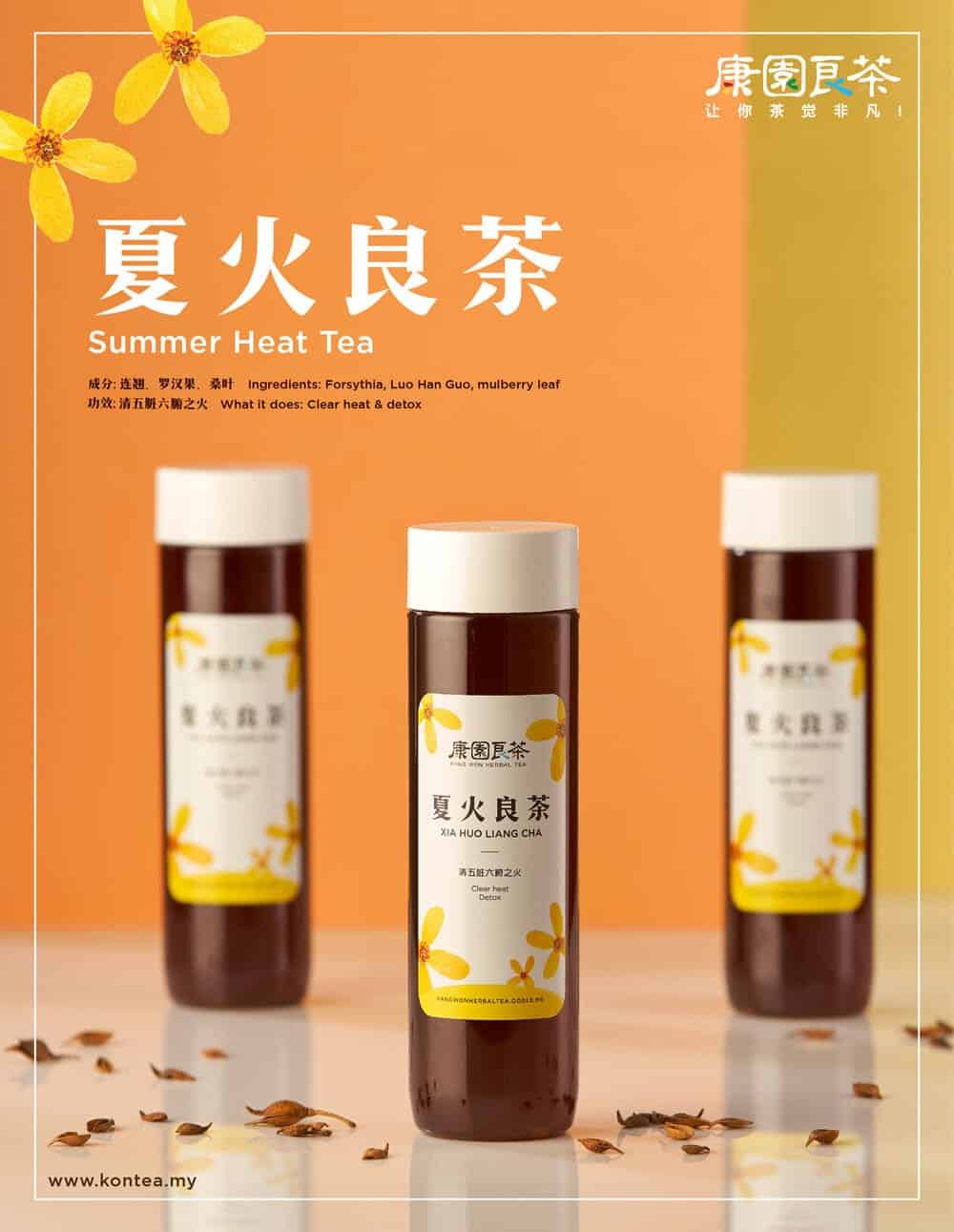
Summer Heat Tea
Effects: Capable of eliminating excessive heat from the climate, improving constipation and hot tempers. Forsythia, which is a type of flower with high ornamental value and herbal value, is also added to the drink to further facilitate the elimination of heat.
Suitable for:Headaches, irritation, dry stool, low sleep quality.
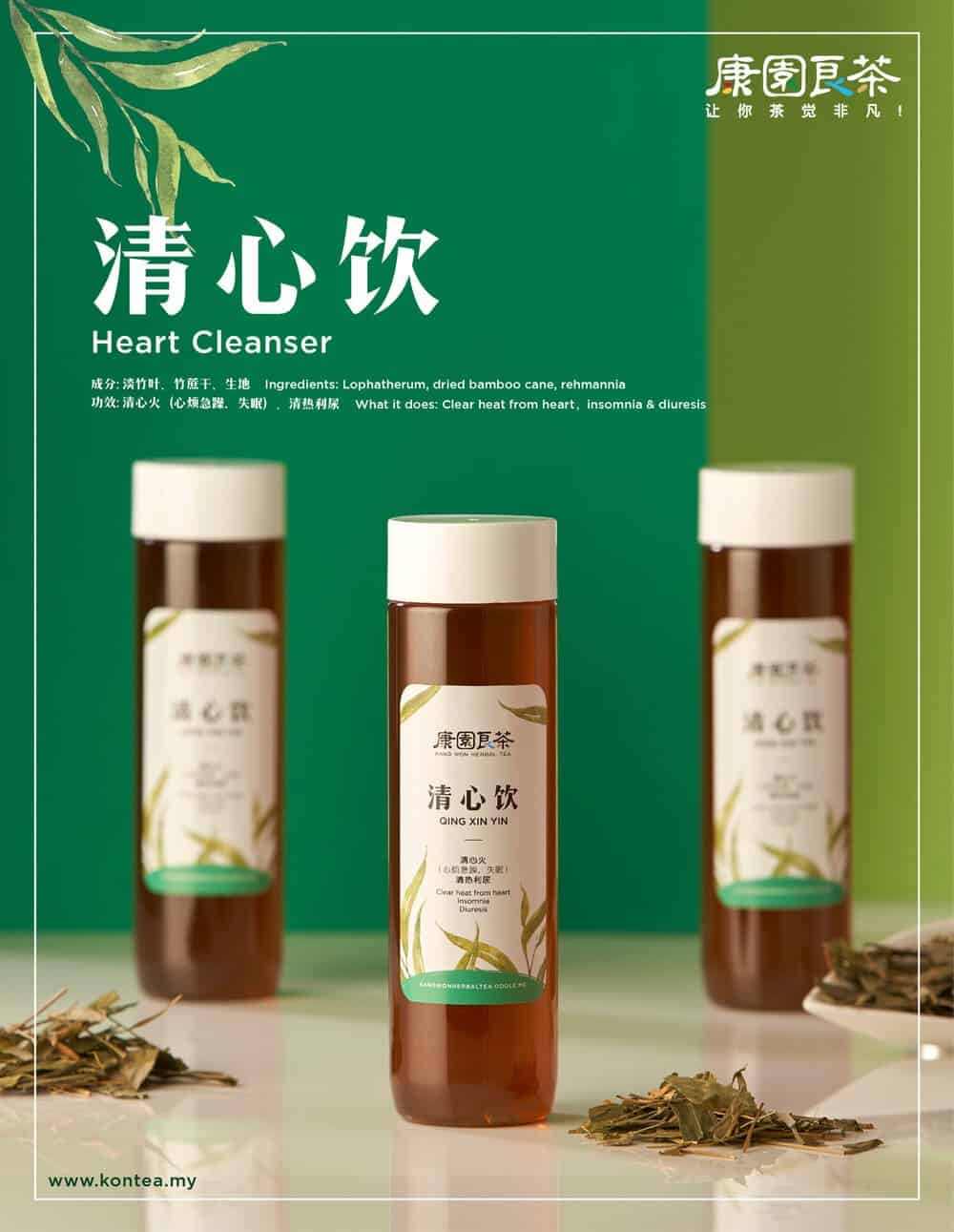
Eight Ingredients Herbal Tea - Heart Cleanser
Effects:Lophaterum is a kind of perennial herb, which is able to eliminate heat, facilitate urination, improve symptoms from gum swelling, discomfort, and stomatitis. Lophaterum can be simmered with dried bamboo cane and rehmannia, thus adding sweetness to the drink and eliminate excessive heat at the same time.
Suitable for:Troubled working adults, boils on the tongue, yellowish urine, restless nights.
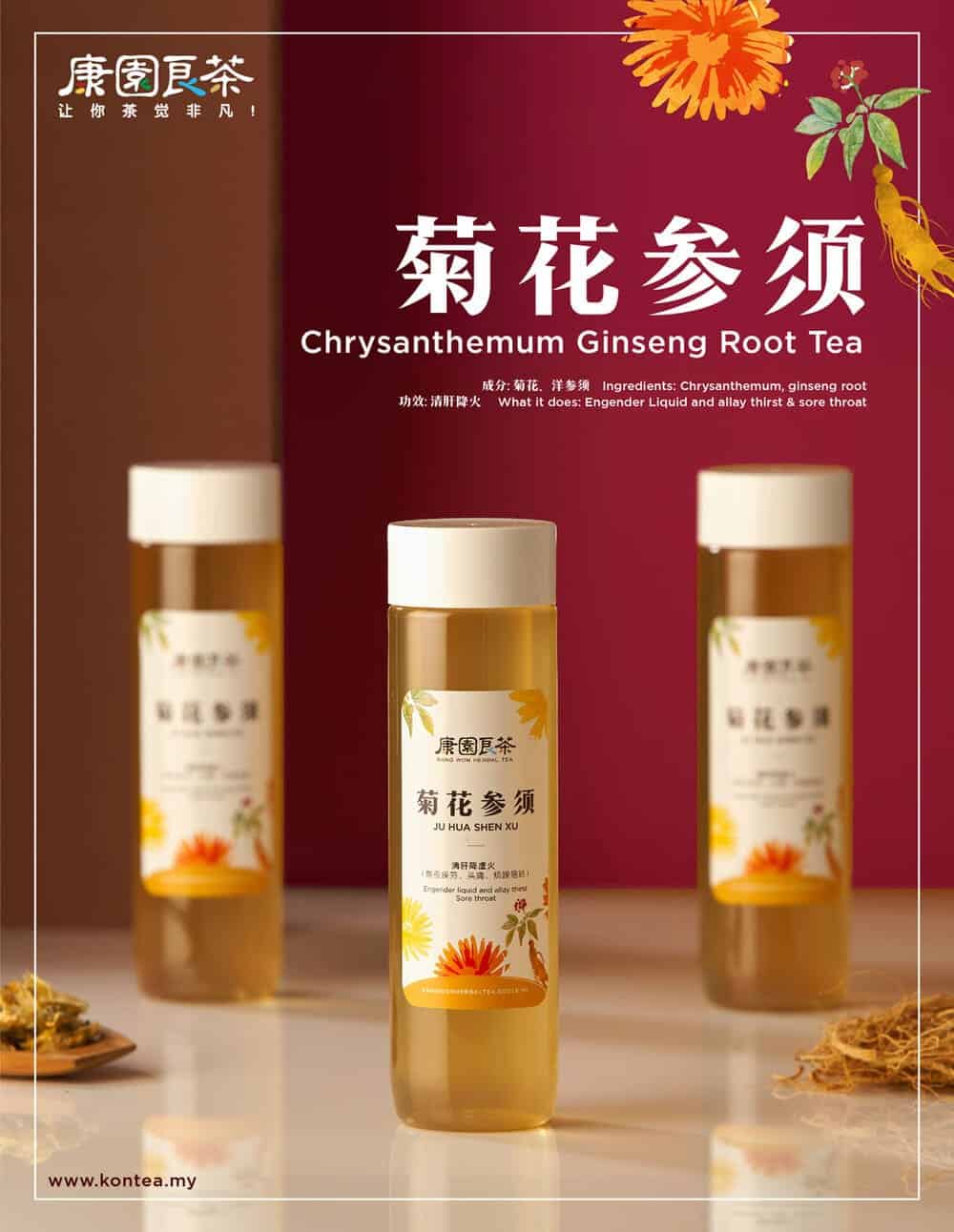
Chrysanthemum Ginseng Root Herbal Tea
Effects:Chrysanthemum is used in many herbal flower teas due to its affordability and wide range of uses. Ginseng root, on the other hand, is good for nourishment and the invigoration of Qi. A combination of the two is able to eliminate body heat and fatigue.
Suitable for:Staying up late, headaches, hot tempers.
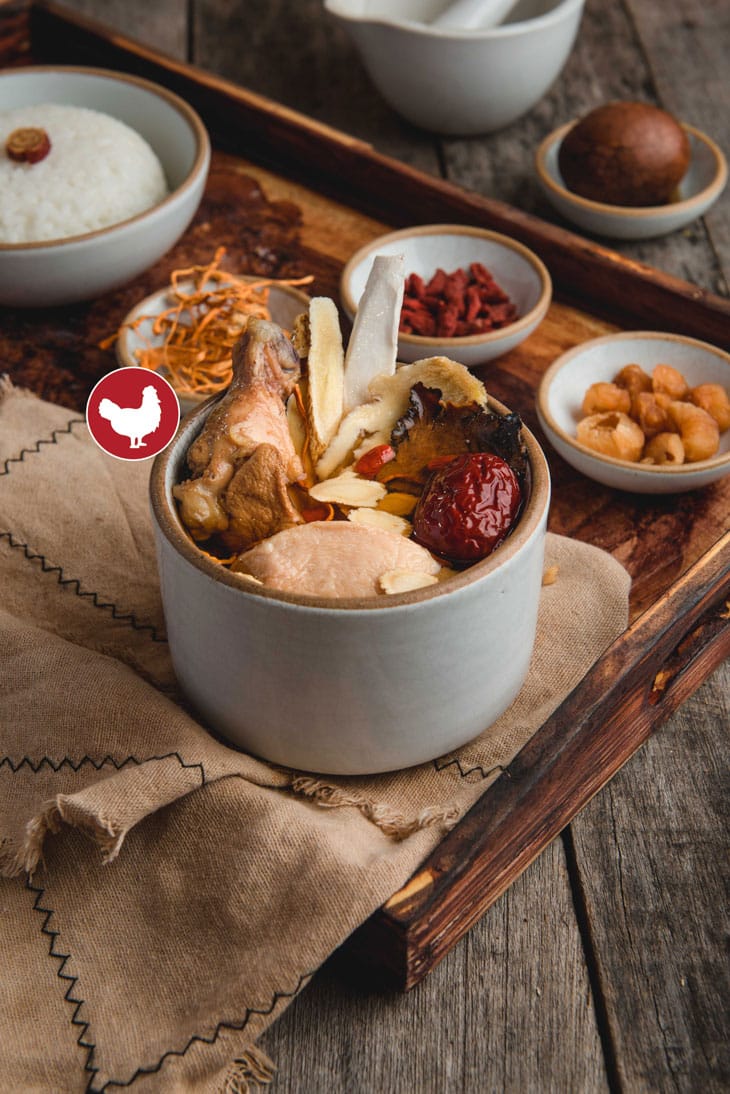
American Ginseng Soup
Effects: American ginseng has the effects of replenishing energy and clearing heat. As people are living such fast-paced lives, they tend to get nervous and anxious, and American ginseng soup can help to calm their nerves. American ginseng is great against fatigue and to improve metabolism. If someone is experiencing bad sleep quality, forgetfulness, and symptoms of anxiety, they can use this soup to recover quickly.
Suitable for:Nervousness, frequent insomnia, constant dreams and easily startled out of sleep, as well as cold sweat.
Please feel free to consult our TCM Practitioners or our staff either at our shop (OUG branch or Bangsar branch) or explore more about Kontea's quality products. Our TCM Practioner and staff can tailor treatment plans and product recommendations based on your specific symptoms and health condition.
Feel The Teaference
Kontea Products
Professional Service
TCM Services
Graduated from Nanjing University of Chinese Medicine in China, we are licensed Chinese medicine practitioners who provides professional Chinese medicine services. We approach each patient's case from their perspective, attentively listening and analyzing their physical condition.
